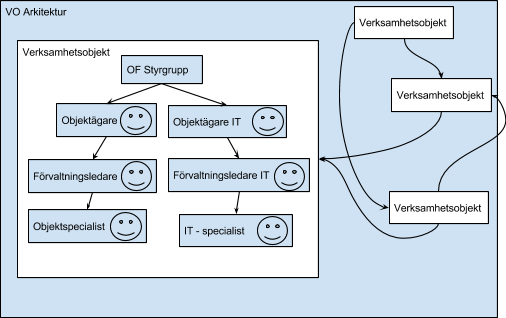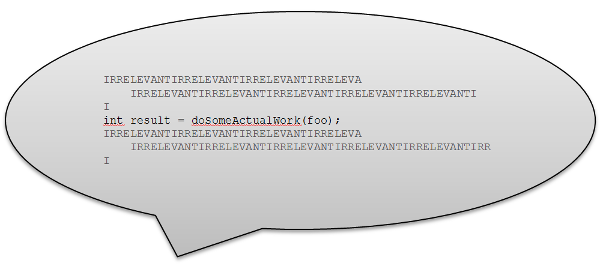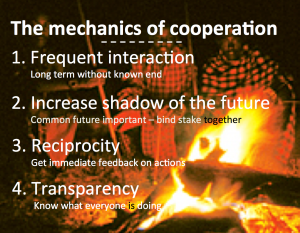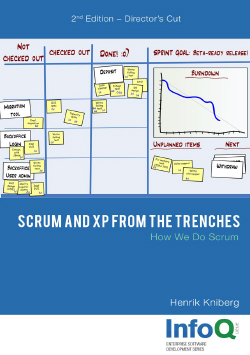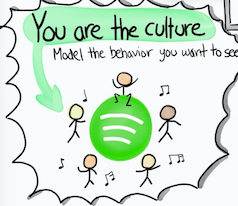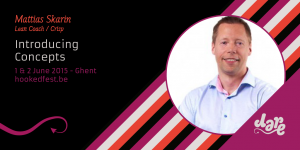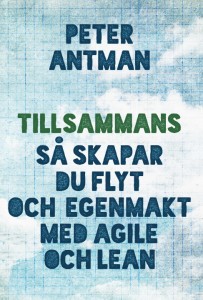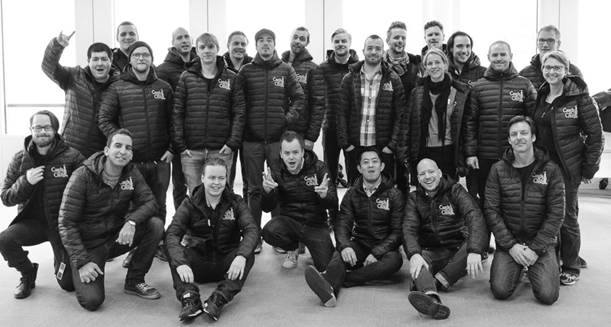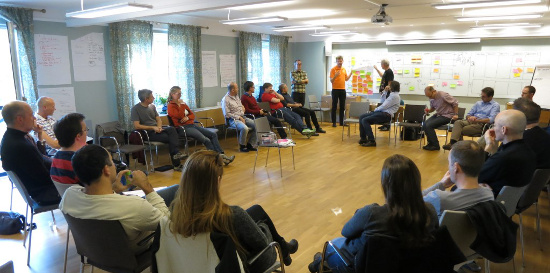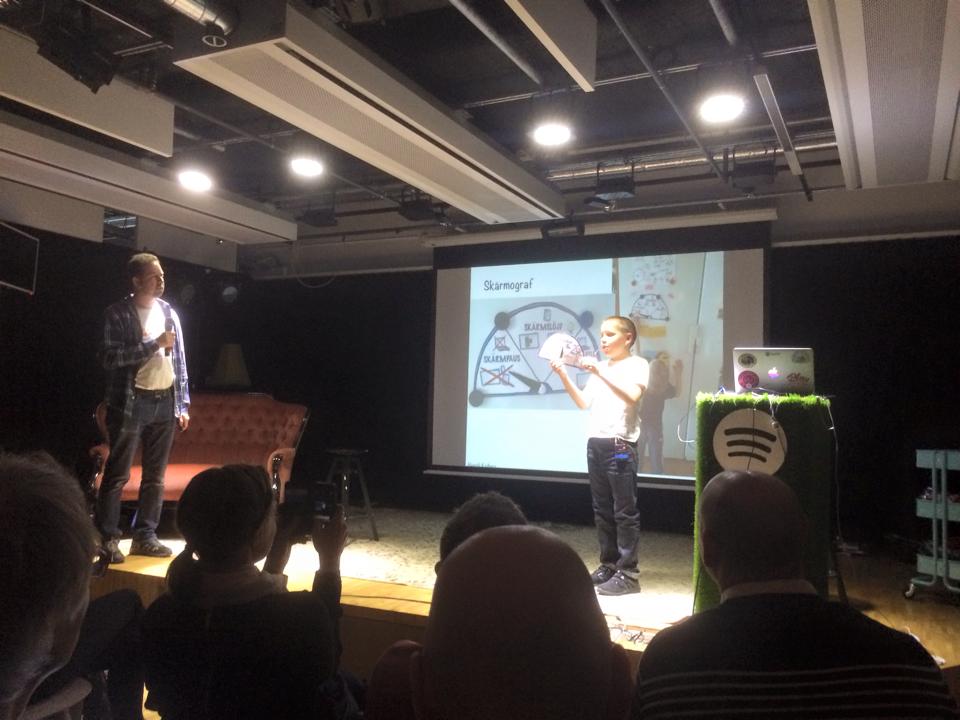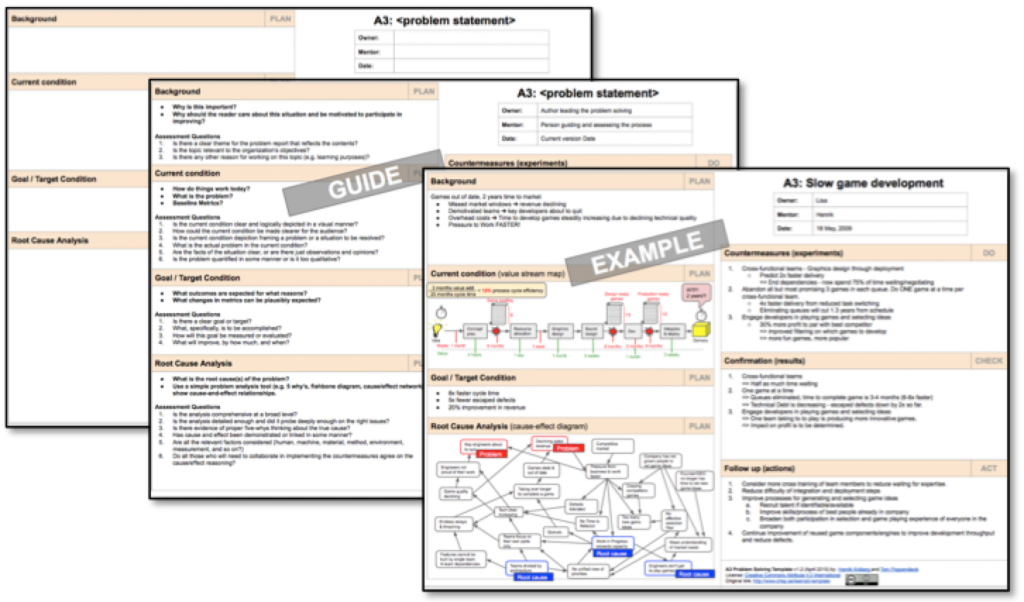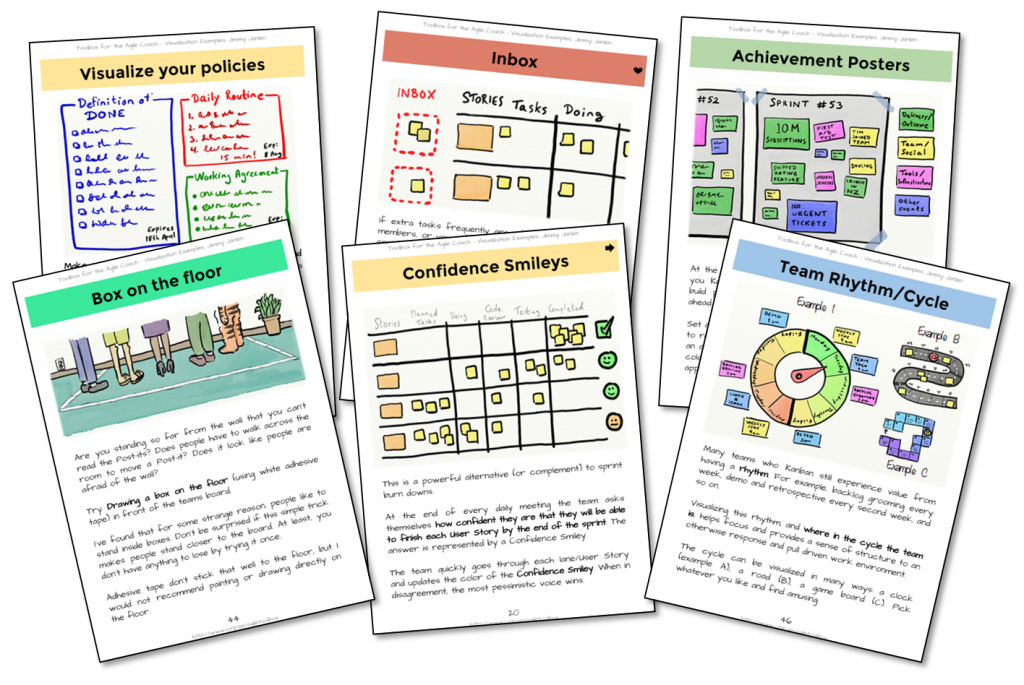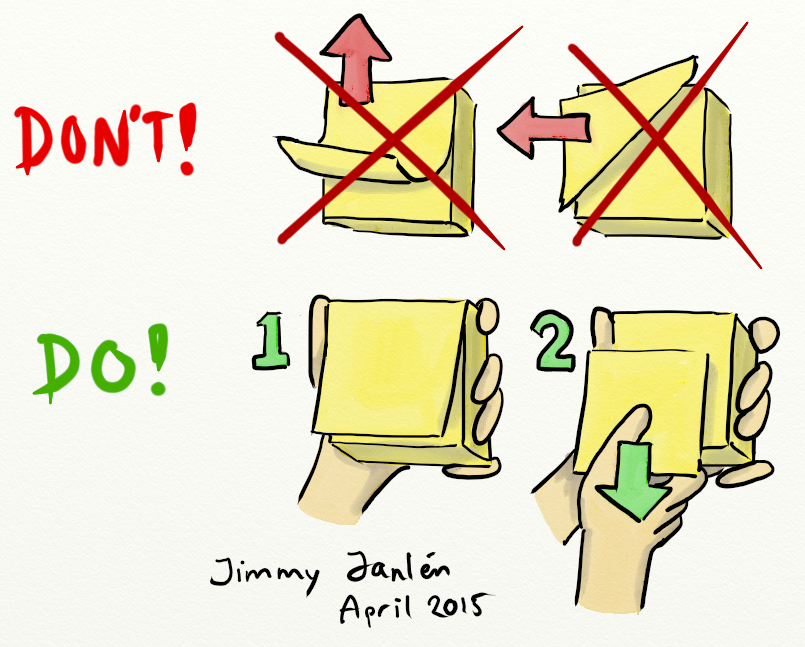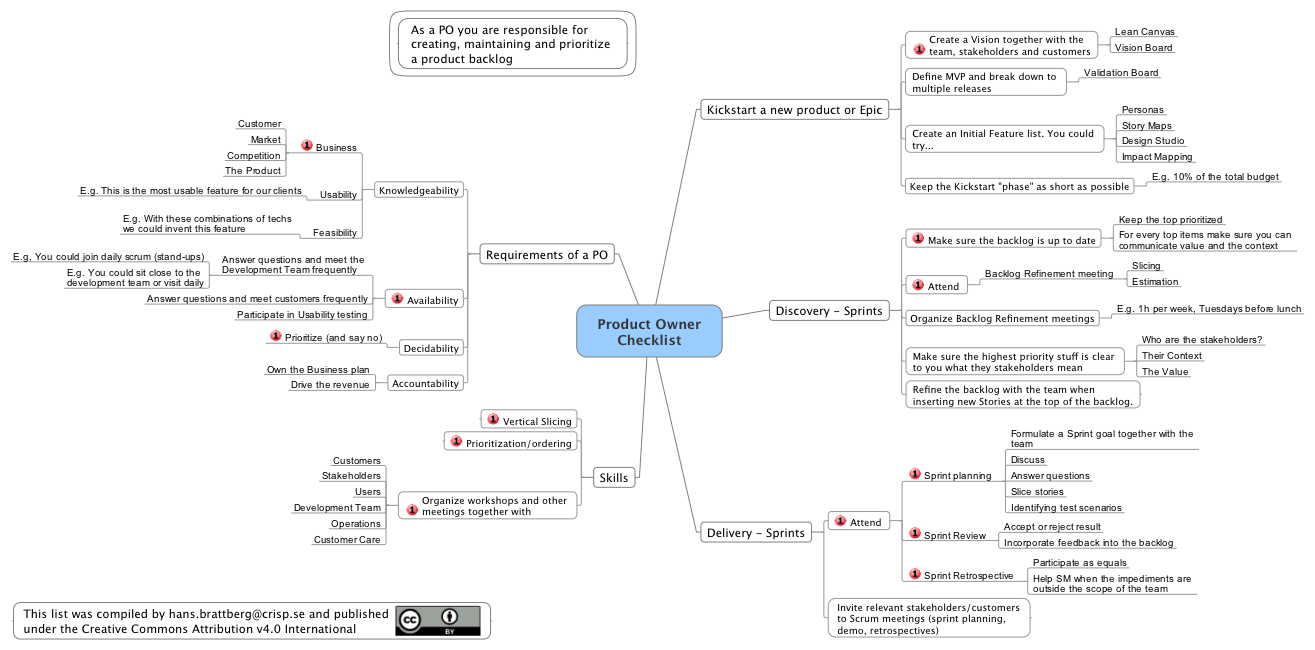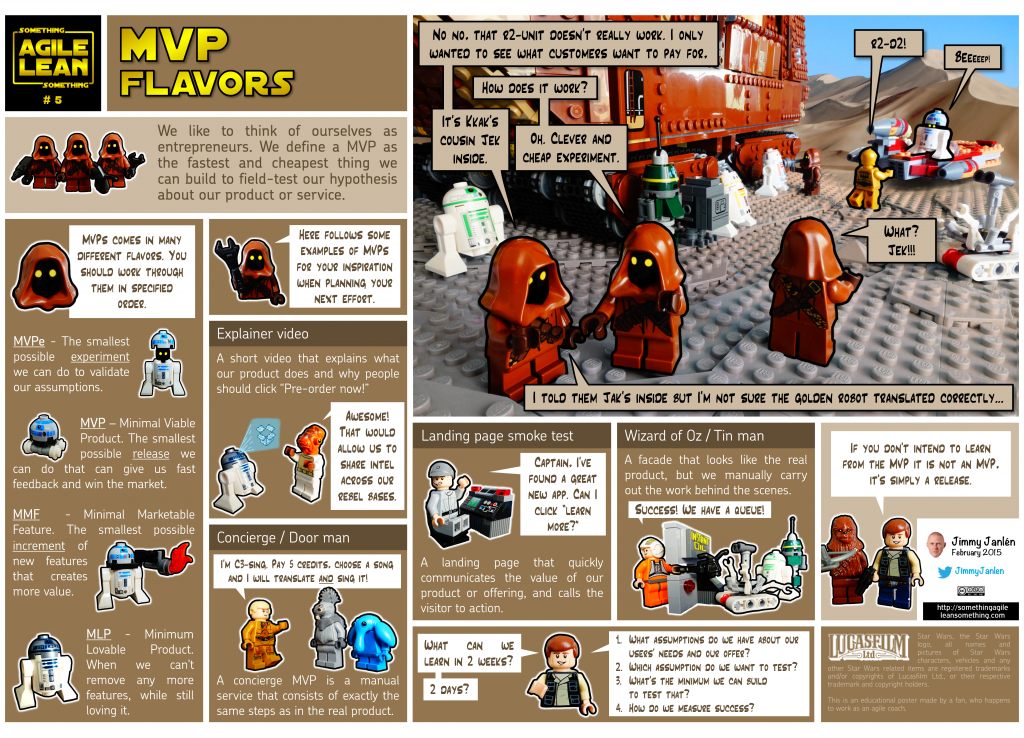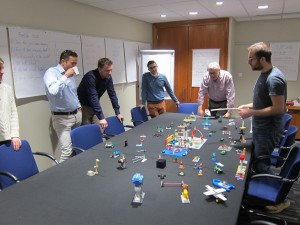Vi har byggt en sajt där med goda exempel, för att inspirera företag, myndigheter och verksamheter på väg in i en upphandling att ta steget till Agila kontrakt. Check it out – agilakontrakt.se. Eller följ oss på twitter: @agilakontrakt. Turen har kommit till att berätta om Wunderkraut, som använt Agila kontrakt sedan 2010. Det intressanta är hur de i den ombytliga
Continue readingCrisp's BlogPage 12
from the Crisp Consultants
Omöjligt att kombinera agilt arbetssätt med pm3
Låt oss säga det direkt: att kombinera pm³ och någon agil metod, som t ex Scrum, är en dålig idé. Varför?
Därför att du kommer inte kunna dra nytta av det agila arbetssättet. pm³ är baserat på en helt annan världsbild. pm³ bygger på årsplaner och att verksamheten beställer från en leverantör, typiskt den egna IT-avdelningen. Agilt har som en grundläggande värdering att reagera på förändringar i stället för att följa en plan. Det agila arbetssättet drivs proaktivt genom utforskande i motsats till att vara en mottagare av beställningar.
Vi har sett flera försök att implementera pm³ och de har ofta misslyckats på grund av att pm³ bygger på tankar om att verkligheten kan förutsägas 18 månader i förväg, att användarna vet vad de vill ha och att det är viktigt att ha en skarp linje mellan verksamhet och IT. Vi hävdar (och flera med oss törs vi lova) att inget av detta är varken sant eller bra.
New book from Crisp – Kanban in 30 days
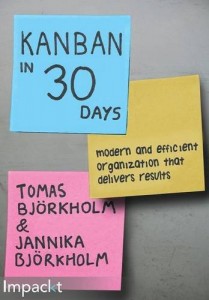
Designed as a 30-day action plan, this book will help you understand and implement Kanban – and start seeing results – in a month.
Analyze your current situation and define your goals and wider strategic aims, and begin developing a plan to help you and your team confidently work towards achieving them. Involve your team into driving cultural change, learn how to prioritize, and organize tasks and projects to efficiently use your time and resources.
Create your own value stream map to better understand your processes and identify improvement areas, and adapt and use the features, tips, and examples to overcome challenges you may face when implementing Kanban. Pick up this book and experience the full results of this vital Agile methodology-fast.
Who this book is written for
If you want to simplify your processes, improve collaboration, and manage projects successfully, this guide to Kanban is an essential companion. Continue reading
Real World Kanban – now on Amazon
My new Kanban case book now ships from Amazon (as hardcover or in Kindle format). Learn how we: Improved the full value chain by using Enterprise Kanban. (Find out how we improved time to market and shifted focus from Sprints to Flow to deliver customer value in a traditional company.) Boosted engagement, teamwork, and flow in
Continue readingThink twice before logging
One property of legacy code is inflation by irrelevant logging statements. Not only does this increase the size of a bulging code base, I’d also argue that it’s dead wrong.
Quite recently I’ve had the honor of making acquaintance with a piece of code that looked roughly like this:
if (LOGGER.isLoggable(Level.FINEST)) {
LOGGER.log(Level.FINEST, "foo is now", foo.getValue());
}
boolean result = doSomeActualWork(foo);
if (LOGGER.isLoggable(Level.FINER)) {
LOGGER.exiting(this.getClass().getName(), "bar", result);
}
Dedicated Scrum Master or not?
Should the Scrum Master role be full time or part time? What if there is not enough Scrum Master work to do? Can the Scrum Master also do other work in the team? Can the Scrum Master be Scrum Master for several teams?
There was a debate about this and Scrum Alliance created the Scrum Master Manifesto in 2011.
Even though this has been debated by many minds before, I still get asked what my views are on this topic.
I’ve done all kinds of variations on this role. I’ve been a dedicated Scrum Master for a single team. I have done the SM role and a developer role at the same time. I’ve been a Scrum Master for several teams at the same time. These alternatives have their own advantages and challenges. In this post I intend to describe my view and recommendations.
Samarbetets myserier på Agila Sverige 2015
Samarbete är en svår konst. De flesta organisationer har grava underskott på samarbete. Ännu saknas på många sätt förståelse för vilka mekanismer som driver och uppmuntrar samarbete. På Agila Sverige 2015 pratade jag om samarbetets mystik och gjorde några nedslag i en längre workshop om detta. Bland annat visar jag hur man kan spela ultimatumspelet i storpublik, hur apor reagerar på orättvisor och de fyra pelarna i samarbetets mekanik.
No, I didn’t invent the Spotify model
You know the saying “don’t shoot the messenger”? Well, that goes both ways – “don’t praise the messenger”. Well, OK, you can shoot or praise the messenger for the quality of the delivery – but not for the message content!
I’ve spent a few years working with Spotify and published a few things that have gained a surprizing amount of attention – especially the scaling agile article and spotify engineering culture video. This has come to be known as the “Spotify Model” in the agile world, although it wasn’t actually intended to be a generic framework or “model” at all. it’s just an example of how one company works. The reason why I shared this material is because my Spotify colleagues encouraged me to, and because, well, that’s what I do – help companies improve, by learning stuff and spreading knowledge.
Slides from Hookedfest
Just back from Hookedfest – a conference for product people. It’s refreshing to see and discuss product development from a market and product perspective, in contrast to the “what can we build” perspective we all to often resort to as engineers. It was interesting to see other speakers (for example the Google guy) share similar experiences on
Continue readingTillsammans – så river programmerarna företagspyramiderna
I år hade jag äran att i anslutning till Agila Sverige (2015) släppa Riv pyramiderna igen som riktig bok med den mycket bättre titeln Tillsammans – så skapar du flyt och egenmakt med agile och lean (tack till Joakim Holm för att du övertalade mig att negativa titlar är dåliga). Den hemliga undertiteln tycker jag
Continue readingBook release: Real World Kanban
My new book – “Real World Kanban” is now available. Here’s the plot in a nutshell: What happens when Kanban is used in real projects? Kanban has few rules, but an infinite number of strategies. What seems easy in theory can become tangled in practice. So there’s nothing like learning from real world cases. Learn how
Continue readingGuest post by Ellen Gottesdiener: Agile Product Ownership – 9 Essentials for Product Success
 The key to product success is to discover and deliver the right product for the right customers—and to do it at the right time. That doesn’t change when you move to an agile way of working. In fact, appropriately applying the agile mindset amplifies the imperative of eliciting and specifying the right requirements. The goal is to deliver the highest value product needs (requirements) in as short a time as possible.
The key to product success is to discover and deliver the right product for the right customers—and to do it at the right time. That doesn’t change when you move to an agile way of working. In fact, appropriately applying the agile mindset amplifies the imperative of eliciting and specifying the right requirements. The goal is to deliver the highest value product needs (requirements) in as short a time as possible.
Continue reading
How We Developed Candy Crush Soda Saga
Curious about how we developed Candy Crush Soda at King? Like any project we’ve had our challenges. We developed the game on a framework that had never been tested live, while programming in two languages simultaneously to support multiple operating systems. Adding to the challenge, we started working without a prototyped game idea, within an existing Saga format that comes with a long list of features that players are used to. The project, code-named Stritz, was born in the spring of 2013. We soft launched a year later, and hard launched in the fall of 2014. This is our story.
Continue readingGraphWiki
My GraphWiki is now in a public beta 🙂 http://www.graphwiki.com/
Continue readingDownload Crisp’s voting and hand signal posters
At Crisp we often find ourselves discussing various, sometimes though topics, in really big groups. The way we govern ourselves (no managers) and the fact that we make big decisions by consensus or concent have driven a need for us to figure out how to have efficient and effective discussions in big groups. A couple
Continue readingProgramming with kids & co-speaking with my son :)
Yesterday me and Dave (11 yrs) spoke together for the first time! We did a public talk at Spotify about how to help kids learn to program. We’ve been experimenting a lot with that in my family (4 kids to experiment with… muahahaha), and wanted to share some learnings. Worked out better than we could have hoped, considering all the risky tech demos and live coding involved 🙂
Shared the stage with teacher Frida Monsén who talked about how to get this kind of stuff into schools. Thanks Helena Hjertén for organizing this, and Spotify for hosting & sponsoring. Here’s an article in Computer Sweden about this event and our little “mod club”.
Here are the slides! They are in Swedish though. Might do an English version of this talk some day 🙂
A3 problem solving template – now in Google Doc!
I’ve finally gotten around to porting the A3 template to Google Doc. Who wants to send around MS Word docs and PDFs? Bah. Put the doc in the cloud instead, where everyone can see and edit together. Or print the template and do it by hand. Curious about A3 problem solving? See the FAQ. Here’s
Continue readingNew book in the writing: Toolbox for the Agile Coach – Visualization Examples
Update: The book has since the publication of this blog been
made available for purchase at LeanPub.
A couple of weeks ago I published my new book ”Toolbox for the Agile Coach – Visualization Examples (How great teams visualize their work)” even though it’s still very much a work in progress.
I’ve made it public, thanks to persuasion from my colleague Hans Brattberg. I decided to try out Google Slides to make it easily accessible and to provide a simple way to give feedback. That turned out to be a great decision. The response has been overwhelming. There are at any given point 5-15 people reading the book, many of which provide great feedback, point out spelling correction and provides generous suggestion for more examples.
Lean Documentation
My amateur research has given me the insight that the three most important things for greater effectiveness and good quality are knowledge, knowledge and knowledge. Knowledge is best acquired through a dialog but a dialog is only efficient if it includes someone with knowledge. Unfortunately, there are situations when such a person is not around.
Continue readingHow to peel off Post-its
Having trouble with curled Post-its that won’t stick to the wall? Well, it could be due to bad glue or that you peel them off wrong. I would guess it’s the latter. Might feel like a silly blog post to write, but I found myself teaching people the technique of peeling Post-its quite frequently. It’s
Continue readingThe Sprint Burndown is dead, long live Confidence Smileys
I’ve met very few teams that successfully found a valuable and useful way to update and use a Sprint Burndown. The Sprint Burndown can be tedious to update (if done manually), and doesn’t seem to trigger the discussions in the Scrum team it is designed for. Even to agree on a unit causes confusion (hours, tasks, finished User Stories?).

But don’t despair; let me introduce you to Confidence Smileys. Confidence Smileys provide a simple, honest, transparent and overview-friendly tool for the team to visualize how confident a team is that they will be able to finish each User Story by the end of the sprint. The can replace the need for a Sprint Brundown (or Sprint Burnup), or function as a complement.
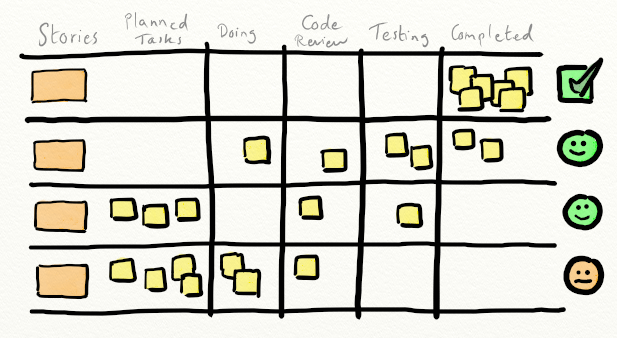
Lean Startup
Du har en idé om en tjänst.
Hur kan du snabbast och enklast verifiera att någon vill använda den?
Det är vad Lean Start-up handlar om.
A Scrum Product Owner Checklist as a mind map
If you wonder what a Scrum Product Owner need to do, here’s the checklist (in form of a mind map) for you!
Too small for a user story – bugs, fixes and support
Some things are too small for the overhead of a user story, still they must be handled during the sprint effectively. I suggest a small taxonomy to classify them and also what to do with them.
Slides from JDays
I talked about some overlooked (and quite new) features of JUnit at JDays in Gotherburg. My presentation was a tour that started with boring example tests, and then proceeded through parameterized tests, theory tests, and generative testing. At the end of this tour, I spoke about fundamental, yet again overlooked, testing techniques such as finding
Continue reading7 Rules on Code Readability
What makes good code? Many things but whatever the qualities are, readability is a cornerstone. If you can’t read the code, you can’t fix it. So how do you write readable code? I’ll give you my view but it’s like books, what I find enjoyable may be different from you.
Something Agile Lean Something – Posters on agile and lean concepts and techniques
A couple of weeks ago I started a new hobby. I’ve found a way to combine teaching agile and lean with creativity, art, Lego and Star Wars. Now I love spending time slowly putting Lego blocks together to create scenes. One by one. Very meditative and creative 🙂 The scenes I build I then use
Continue readingLearning Lego Serious Play
Three months ago I stumbled upon a question which needed an anwer: Could Lego be used for business strategy development? I just had to go to London to find out the answer.
With a group of 12 I spent the full weekend.. building Lego! When was the last time I did that? (hint: some 30 years ago..). The real interesting part is of course the stories we tell about the models. Each time we do, the team moves closer towards a shared understanding and also generate new insights. That’s cool!
Below: Team members walking through our shared model.
Guest blog by Anders Ramsay – Finding Agile UX Nirvana with the One-Feature Release
This is a guest post from veteran Agile UX coach Anders Ramsay who’ll be visiting Crisp in March.
In a traditional UX practice, there tends to be a strong focus on whole product design. In other words, we want to integrate all the features of a product into a unified and coherent experience, before we can consider the design work to be done.
Big Design Up-Front is like growing a tree in a “wireframe nursery” before planting it in the real world of working software.
But if you are taking this approach in designing the user experience, and you’re also part of an Agile team, then that might be a major reason why you’re struggling to integrate your UX practice into an Agile model.Continue reading

